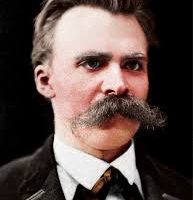
Ivan Bunin, a luminary in Russian literature, is celebrated for his ability to explore the intricate dynamics of human experience through his short stories. His collections “Shadowed Paths” and “Light Breathing” stand out as exemplary works that highlight his mastery of language, thematic depth, and character exploration. In these collections, Bunin deftly weaves together themes of nature, love, and memory, creating narratives that resonate deeply with readers.
Bunin’s writing is deeply imbued with a profound appreciation for nature, which serves not merely as a backdrop but often as a character in its own right. In “Shadowed Paths,” the landscapes are integral to the emotional landscape of the narratives, reflecting the inner turmoil and struggles of his characters. The descriptions of the Russian countryside evoke a sense of nostalgia and longing, capturing the essence of the human condition. The interplay between the natural world and the characters’ emotional states is a hallmark of Bunin’s style, emphasizing a profound connection between the human soul and the environment. This connection is not only aesthetic but also thematic, as nature often mirrors the characters’ experiences, illustrating the complexities of love and loss.
In “Light Breathing,” the theme of fleeting moments is central to the narratives. Bunin focuses on ephemeral experiences—brief encounters that leave lasting impacts. The transient nature of life is a recurring motif, suggesting that beauty and pain are often intertwined. In this collection, characters grapple with the impermanence of their experiences, reflecting a broader existential contemplation that resonates with readers. The fleeting nature of these moments highlights the richness of life, even in its brevity, allowing for a deeper understanding of the characters’ inner lives.
Love is another central theme in Bunin’s narratives, acting as both a source of joy and a catalyst for suffering. His characters often navigate complex emotional landscapes where love can lead to isolation as much as to connection. In “Shadowed Paths,” the exploration of unrequited love and the yearning for intimacy underscores the loneliness that frequently accompanies deep emotional investment. Bunin’s portrayal of love is nuanced; he reveals its multifaceted nature, capable of uplifting yet also isolating individuals. This complexity invites readers to reflect on their own experiences with love, recognizing the dualities that define human relationships.
Conversely, “Light Breathing” addresses the transient nature of love more explicitly. The moments of affection captured in these stories are often fleeting, suggesting that while love is inherently beautiful, it is also ephemeral. This duality emphasizes Bunin’s understanding of human relationships as intricate and often painful, where the longing for connection is met with the inevitability of separation. The characters’ experiences in both collections illuminate the delicate balance between the joys of love and the sorrows of loss, creating an emotional resonance that lingers with readers.
Stylistically, Bunin’s prose is characterized by its lyrical quality, transforming language into an art form that evokes vivid imagery and emotional depth. His use of rich descriptions and metaphorical language immerses readers in the heart of his narratives. In “Shadowed Paths,” the meticulous attention to sensory details—the sounds of rustling leaves, the vibrant colors of the landscape—creates an immersive reading experience. This lyrical style not only heightens the emotional resonance of the stories but also enhances the reader’s engagement with the text, making the characters’ experiences palpable and relatable.
Symbolism plays a significant role in Bunin’s literary style. In “Shadowed Paths,” the interplay of darkness and light symbolizes the duality of human existence. This symbolism reflects the inner conflicts of the characters, illustrating their struggles with morality, desire, and despair. Such layers of meaning invite readers to engage in deeper interpretations of the text, encouraging a nuanced understanding of the characters’ journeys. In “Light Breathing,” imagery associated with breath becomes a powerful symbol of life and vitality. The act of breathing is often linked to moments of clarity and connection, reminding readers of the fragility and beauty of existence. Bunin’s skillful use of such imagery reinforces the thematic concerns of both collections, creating a cohesive reading experience that resonates long after the final page has been turned.
The characters in Bunin’s stories are intricately crafted, often embodying the complexities of human emotion. Their psychological depth allows readers to connect with their struggles on a personal level. In “Shadowed Paths,” characters wrestle with their desires and fears, making choices that reveal their vulnerabilities. This complexity is particularly evident in stories where characters confront moral dilemmas, showcasing Bunin’s keen insight into the human psyche. In “Light Breathing,” the characters frequently find themselves at crossroads, faced with decisions that reflect their innermost desires and regrets. Bunin’s ability to portray their internal conflicts with sensitivity and nuance elevates the emotional stakes of the narratives, inviting readers to empathize with their journeys.
Memory plays a crucial role in shaping Bunin’s characters. In both collections, memories serve as a lens through which characters view their current lives, shaping their identities and influencing their actions. The act of remembering becomes a means of grappling with the past, often leading to moments of revelation and self-discovery. This thematic thread underscores the importance of memory in shaping human experience, a testament to Bunin’s understanding of the intricacies of time and perception. The interplay between memory and identity enriches the narratives, making them deeply resonant as characters navigate their emotional landscapes.
Bunin’s storytelling is enhanced by his ability to transform everyday moments into profound romantic encounters. His narratives often incorporate elements of folklore, creating a bridge between the past and the present. This blend allows readers to connect with the cultural heritage of Russia while engaging with contemporary themes. The incorporation of traditional tales adds a layer of accessibility, making his work resonate with a broad audience. By weaving folklore into his narratives, Bunin enriches the texture of his storytelling, establishing himself as a writer who honors his roots while exploring the complexities of modern life.
A significant aspect of Bunin’s work is his ideological stance, which sets him apart from many of his contemporaries. His opposition to socialist ideals and his embrace of a more individualistic perspective inform his narratives, shaping the characters he creates and the worlds they inhabit. This ideological divergence is not merely political; it is integral to his artistic identity. It influences the emotional landscapes he constructs, providing a refreshing alternative to the dominant narratives of his time. Bunin’s focus on personal experience offers insights into the human condition, making his stories timeless and relevant across generations.
The Nobel Prize in Literature awarded to Bunin in 1933 serves as a testament to his significant contributions to the literary world. This recognition highlights not only his individual achievements but also underscores the importance of his work within the broader context of Russian literature. Bunin’s stories resonate with readers across generations, inviting them to reflect on their own lives and the shared human experience. His exploration of themes such as love, loss, and the quest for meaning invites readers to engage with the complexities of their own emotions.
In examining the literary techniques employed in “Shadowed Paths” and “Light Breathing,” it becomes evident that Bunin’s mastery lies in his ability to convey profound truths through the lens of personal experience. His language is not merely functional; it is an art form that elevates the narratives, allowing for a deeper exploration of the human condition. The rhythmic flow of his sentences mirrors the ebb and flow of emotions, enhancing the reader’s connection to the text and the characters’ experiences.
Bunin’s legacy as a short story writer is marked by his romantic approach to life, his innovative narrative techniques, and his rich linguistic style. His ability to intertwine folklore with contemporary themes, combined with his distinct ideological perspective, sets him apart as a unique voice in literature. As readers engage with his works, they are not only entertained but also encouraged to ponder the deeper meanings of their own experiences. This duality of enjoyment and introspection affirms Bunin’s place as one of Russia’s greatest literary talents.
In conclusion, Ivan Bunin’s “Shadowed Paths” and “Light Breathing” stand as exemplary collections that showcase his literary prowess. Through lyrical prose, rich symbolism, and complex characterization, Bunin invites readers into a world where nature, love, and memory intertwine to illuminate the complexities of the human experience. His work transcends time and cultural boundaries, offering insights into universal struggles that resonate deeply with readers. By navigating the shadowed paths of existence and breathing in the light of fleeting moments, Bunin captures the beauty and fragility of life, inviting us to reflect on our own journeys.
BY ALEM HAILU G/KRISTOS
THE ETHIOPIAN HERALD SUNDAY EDITION 29 JUNE 2025





